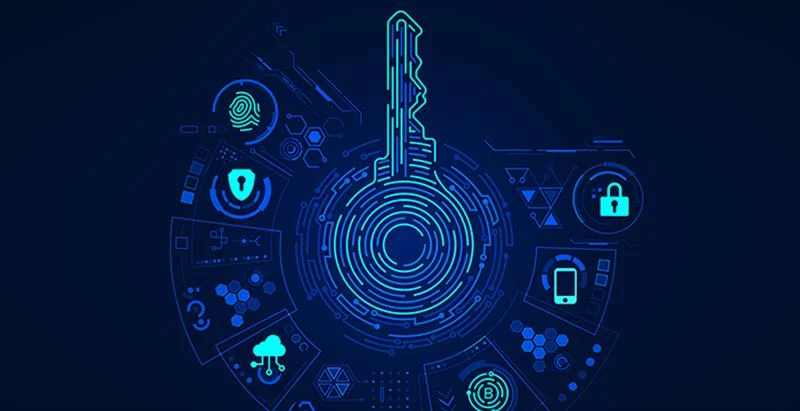THE ULTIMATE GUIDE
TO CYBERSECURITY FOR BUSINESS
What is
Cybersecurity?
By definition, Cybersecurity means measures taken to protect computers, servers, mobile devices, electronic systems, networks, and data against unauthorized access, theft, or malicious attacks.
Why is
Cybersecurity So Hard?
Trying to keep up with the latest technology advances can be mind-numbing, and knowing which ones are right for your business is an even greater challenge. Whichever technology solutions you choose, they will need to be integrated with various online platforms including email servers, applications, mobile devices, Cloud-based software, customer portals, and more. If just one of those entry points is vulnerable, they all are.
The Dark Web — a virtual marketplace for cyber crime — is a place where modern criminal activities originate, and it’s also where stolen consumer data is bought and sold.
The reason why keeping systems secure is so difficult is because of an underground network of criminals who conduct their “business” on the Dark Web. Online activities are encrypted, making it difficult to discover hackers’ identities and stop their efforts.

Types of Cyberattacks and the Criminals Behind Them
Why do hackers want to breach your systems? For some, it’s the money they can make selling your intellectual property or customer data on the Dark Web. Sometimes these criminals can lurk inside your networks undetected and retrieve your data without you ever knowing.
Others want to disrupt your operations and hold your systems hostage in exchange for ransom. And then there are those who simply want the satisfaction of knowing they can infiltrate systems to wreak havoc.
No matter the intent, the threats are real. Learn everything you ever wanted to know about the various types of cyberattacks by checking out the following resources and articles.
Additional Resources:
Differences Between a Virus, Malware & Ransomware
Beware the Most Common Cyberattacks
A Brief History of
Cyberattacks
1970s
The first computer virus named “Creeper” was discovered on an experimental computer network that predated the internet.
1980s
The first “computer worm” infected computers running UNIX. Due to a miscalculation by the creator of this worm, it spread across the internet, gaining major media attention.
1990s
Aggressive viruses infected millions of PCs and crippling email systems worldwide. Cyberattacks became a major concern, prompting the rise of antivirus software.
A New Millennia
Starting in 2000, a 15-year-old boy, known as “Mafiaboy,” launched an attack on commercial websites, causing more than $1 billion in damage. Victims included Amazon, CNN, eBay and Yahoo!
Today
The number of data breaches continues to compound. Notable recent attacks include Equifax, Target, Sony, Adobe, and others. Credit card hacks, malicious ransomware, stealing of personal identifying information, and more have been the motivations.
More Interesting Cybersecurity
Facts and Resources
- Top 10 Downright Scary Cybersecurity Facts for 2018
- A Look at Cybersecurity's History
- The History of Cloud Computing (And What the Future Holds)
- What Your Business Needs to Know About Cloud Security
- 5 Notable Cyberattacks and Lessons Learned
- 5 Cybersecurity Stats You Need to Be Aware Of [Infographic]
- Finding Security in an Insecure Age

What You Might Not
Know About Cybersecurity
A Handbook for Mitigating the Risks of Cybercrime

How Real is the Risk
of a Cyberattack?
Many organizations go to extraordinary lengths to protect their businesses from various disruptions and downtime — everything from reducing employee turnover to preventing property damage and upgrading equipment. According to many experts, however, cyberattacks are the #1 threat to global organizations, yet many don’t implement adequate measures to mitigate the risks.
How About
Your Business?
Check out the following resources to get a better sense of what you may be up against.
- 6 Signs Your Business is at Risk of a Security Breach
- The Latest Hacker Techniques to Watch For
- What is Shadow IT, and Is It Sabotaging Your Company?
- Signs of a Computer Hack and How to Prevent it
- Visual Guide — How to Know if Your Computer’s Been Hacked [Infographic]
- The Growing Cybersecurity Risk for Small Businesses

How Prepared Are
You for a Cyberattack?
How to Prevent
Cyberattacks
There’s no silver bullet for preventing cyberattacks. As technology evolves and advances, so do the tactics of hackers. There are myriad ways to infiltrate systems, and a multi-faceted approach needs to be taken to mitigate the risks and stay on top of the latest threats.
Tips for Employees
Even though emphasis is placed on thwarting cyber criminals through technology-based solutions, the best way to protect an organization’s data and systems is to educate employees. Human beings are the most common security flaw. Provide the greatest protection for your systems by ensuring your employees don’t mistakenly open the door to hackers.
Practical Business Advice
In addition to educating employees, there are steps your business can take to mitigate the risks of a cyberattack. Whether arming your systems with the latest firewalls or preventing unauthorized applications, use these resources to help keep your networks secure.
- The Experts Top Choices for Business Antivirus Software
- Essential Steps to Better Cybersecurity For Your Business
- Will You Get Sued if Your Business Is Hacked?
- Simple Ways to Help Ensure a Secure Computer Network
- The Real Dangers of Unauthorized File Sharing — Tips for Business
- 5 Bad Technology Habits Small Businesses Need to Break
- Should You Store Data on In-House Servers or In the Cloud? The Pros and Cons
- The Best Defense Against Hackers
Avoid Common Hacker Entry Points
It’s easy to focus on computers, servers, and software when it comes to cybersecurity. However, there are other potential entry points in the average business that are often overlooked.
Disaster Recovery Plan
Unfortunately, there is no guarantee against cyberattacks. As shown in recent, high-profile attacks, even the most aggressive security measures and sophisticated software can be susceptible. Preventative efforts are critical, but so are the strategies for responding should a successful cyberattack occur.

Next Steps to Implement
a Cybersecurity Plan
We know; It can be overwhelming. Many businesses don’t have a dedicated IT staff to oversee everyday threats, make timely updates and educate employees about what to look for. Others still have legacy systems or outdated software and hardware that can be easy pickings for hackers. While the tips and techniques shared on this page will certainly lessen the risk of a cyberattack on your business, you don’t have to go it alone. Consider enlisting security experts who can help you not only save your data, but save time, money and frustration, too.
- Take Inventory of Your Business Technology — Use This Inventory Checklist
- How a Proactive Approach to IT Can Prevent Ransomware Attacks
- 5 Small Business Security Risks That Can Be Avoided With Managed IT
- An Exhaustive Guide to Managed IT — Everything You Need to Know
- The Costly Differences Between a Reactive and Proactive Approach to IT
Cybersecurity
News & Insights
Best Cybersecurity for Financial Institutions
It’s no secret that a lot of hackers, like many criminals, want one thing: money. That means financial institutions are often a top target for hackers. Many industry experts have viewed cyberattacks as the contemporary…
Endpoint Detection & Response vs. Antivirus Software
Research has found that cyberattacks cost the world economy over $1 trillion annually. In today’s internet-connected world, a cyberattack could attempt to encrypt, destroy or steal your data. How will your organization…
What is a Network Security Key?
If you're setting up or troubleshooting your WiFi connection, you might be asked for a network security key. A network security key is essentially the password that’s needed to gain access to a specific network. Without…

Take the
Proactive Next Step?
The potential for cyber incidents will only continue to climb as technology advances. By implementing the strategies outlined here, combined with the help of Managed IT professionals, you can stay one step ahead of cyber criminals. Start taking preventative measures today by requesting a complimentary risk assessment of your existing IT environment. Just complete the following form.












